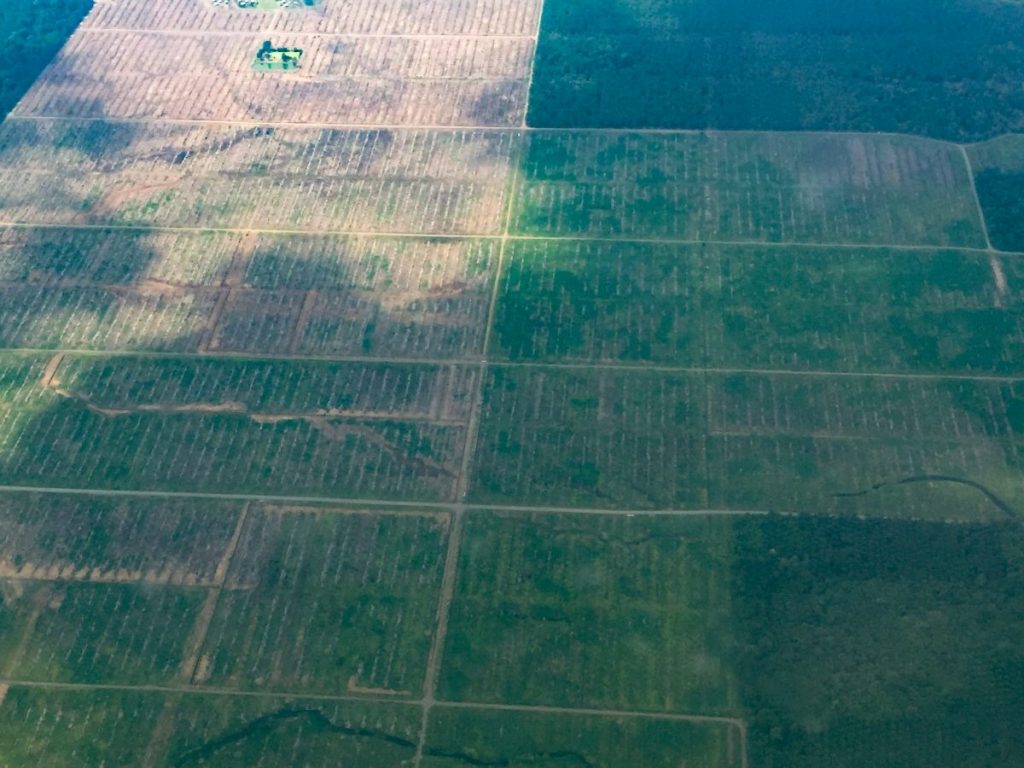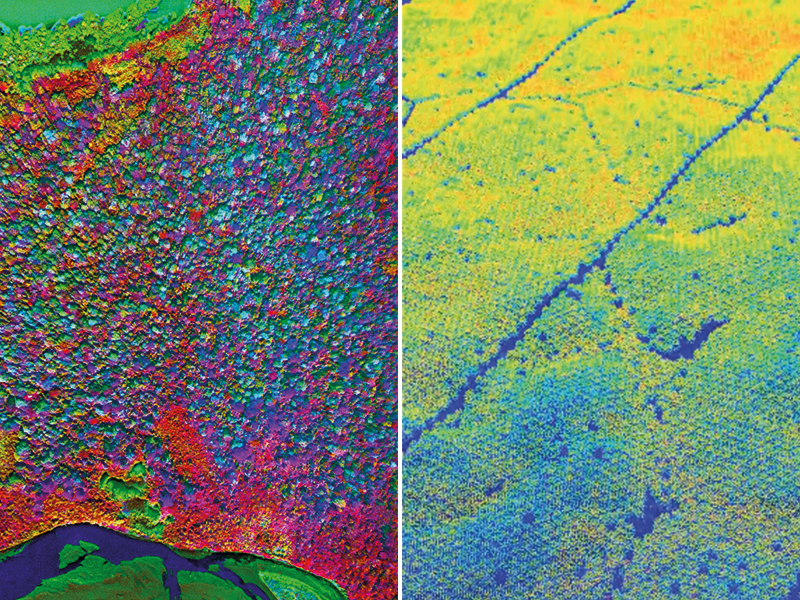Palm Oil The Facts
When rainforest is cleared in Papua New Guinea, all too often it is replaced by palm plantations.
To the human eye, the difference could not be more stark. To local wildlife, the difference is devastating.
Having previously only been found in Africa, palm oil plantations are now covering large areas in Asia, North America and South America – keeping up with the increasing demand for the cheap, versatile oil. And as a result, rainforest destruction is continuing unabated.
New research and technology are highlighting just how detrimental it really is for biodiversity.
It’s a double blow for wildlife. Not only is pristine, primary rainforest destroyed leading to loss of plants, animals and soil bacteria, but it’s then replaced with the hostile homogenous crop of palm.
Flying over Papua New Guinea on the way to Cool Earth’s partnerships, lines of palm plantations stretch for miles below. Although it may look like green, lush foliage, it’s actually the red light for local nature. The indigenous plants are gone, and with them, the animals and plants for whom they provided food and habitat.


Recent studies have shown that palm plantations are home to far fewer species of plants and animals than thought.
The few mammals that were found in palm plantations rarely strayed very far into them. 20 of the 23 species recorded inside of a plantation were less than a mile away from the forest edge. Animals like spectacled bears have ranges of up to 10 square miles in the dry season, so it’s clear how little there is for them in the palms.
This is something that the latest satellite imagery makes startlingly clear. Using technology that shows biodiversity in a landscape, the spectacularly varied image of Cool Earth’s Asháninka partnership looks totally different to the muted tones of a palm plantation.


It’s not just bad news for wildlife, it’s bad news for the climate. The impact of palm oil on Earth’s ability to keep carbon locked away is huge too. Palm plantations in Asia have been found to contain up to 90% less carbon than is stored in the roots, soils, trunks and canopy of natural forest.
With 1 in 8 bird species threatened with extinction due to habitat loss from logging and the conversion of ecosystems to farmland, we need to preserve what we have before it’s too late.
Rapidly, palm plantations are beginning to take over parts of the Amazon rainforest. As the demand for biofuels and vegetable oils around the world grows, it’s easy to be pessimistic.
But with the help of research, technology and reports from the ground, we have the knowledge and power to make a positive change. Saying no to products with palm oil in them, and supporting rainforest communities, are two simple ways to halt the advance of palm plantations.
Further reading:
The Independent, 2018
MongaBay, 2018
RapidLasso
Carbon stocks of oil palm plantation: The role of allometry, 2014
DW.com 2018
Guardian, 2018
